Breast Augmentation
There are many reasons, both medical and otherwise, for a patient to seek breast augmentation. Those who are living with frustrating conditions like asymmetry or tubular breasts, as well as those who have gone through a mastectomy, will consider augmentation for obvious corrective reasons, but the fundamental reason for most women is just to bring their body more in line with their own personal ideal. Appearances are very important both socially and in terms of self-image, and augmentation can be a great tool to achieve a sexier, more feminine appearance.
With modern techniques, the old stereotype about the “bolted-on” look no longer applies. Breast implants can look perfectly natural when done by a good surgeon who knows correct sizing and placement, and fortunately, here in New York City we have some of the finest cosmetic surgeons in the world.
Breast Augmentation Consultation in New York
During your initial consultation, you’ll sit down with our plastic surgeons and discuss what you want to achieve with the augmentation and how best to do that. He will explain the sizes and types of implants and help you to choose what will work best for you as well as discussing where and how to place the implants.

Before and after of breast augmentation surgery to enlarge the breasts * Patient results may vary
In addition, you’ll discuss the steps you can take to minimize the risks of surgery, like getting a full medical screening from your regular doctor and stopping smoking for a few weeks to decrease the risk of complications like blood clotting and infection. Practical matters like recovery time will be included in the conversation, too.
Breast Implant Sizes
Despite the stereotype that women with breast implants are cartoonishly top-heavy, there is a wide range of size options available. You can certainly go for extremely busty if that’s the look you’re after, but most women choose something a little more moderate.
The simplest way to select the correct size of implant for your needs is to place various sizes in your bra and look carefully at how you look in a well-fitted shirt. Our doctors also suggests taking pictures of how various sizes look on your frame. Looking at a photo instead of a mirror offers a little psychological distance, which can make it easier to see things objectively. It also gives a good point of reference for your pre-surgery discussions.
Try to find a good middle ground in terms of size. Very large implants will look unnatural, assuming that’s something you’re worried about, and they can cause problems with finding clothes that fit. Larger implants also have a higher risk of complications. On the other hand, if you go with something too small, you might remain dissatisfied and end up back for another augmentation in a year or two, so choose carefully.
Breast Implant Options
There are two options for the contents of your implants: Silicone and saline. They differ in feel, price, and the ability to detect rupture.
Silicone Implants
Silicone implants have a bad rap because of safety problems with their earlier form, but they’ve been safely back on the market since 2006 and are becoming increasingly popular. Learn more about the safety of breast silicone implants at fda.gov. They come pre-filled with silicone gel and are lighter and longer-lasting than saline implants. Silicone feels more natural and is less likely to ripple, so they are often recommended for extremely thin patients or patients with very little natural breast tissue to mask the implant. On the negative side, rupture is harder to detect with silicone, sometimes requiring an MRI.
Saline Implants
Unlike silicone implants, saline implants are placed empty and then filled with a saline solution. Since they’re placed empty, they don’t need as big an incision as silicone, and they’re more adjustable, so size can be increased or decreased as needed during surgery. The edges of the implant are more detectable than a silicone implant, but when placed behind the muscle in a woman with sufficient breast tissue, they will feel extremely natural.
In addition to the different types of implants, there are also two main choices for placement: Above or below the muscle. While recovery is less painful if you place the implant above the muscle, our surgeons prefers to go under the muscle because it feels more natural, is less likely to interfere with mammograms, and has a greatly reduced chance of rippling.
The final option is scar placement. The most common method is called inframammary and places the scar in the fold under the breast, leaving a small scar just an inch or two long. Since it’s under the breasts, it’s well-hidden even without clothes or in a bathing suit, and it offers good access for any necessary repositioning and shaping.
Peri-areolar placement, which goes under the nipple between the areola and the breast skin, is also common but becoming less popular. While the scar typically heals well, it’s in a conspicuous location, and since it requires cutting near the nipple and through a lot of breast tissue, there is a higher risk of affecting lactation and nipple sensitivity.
Underarm placement is a relatively new option that is increasingly popular. It leaves a very small scar in the underarm that can just look like a skin crease, and since it doesn’t require cutting through breast tissue or milk ducts, it has a very low chance of interfering with breastfeeding or mammograms. It can only be done with a saline implant, however, since it uses a very small incision, and any follow-up surgeries require a different approach because of the placement.
Finally, a belly-button approach gaining popularity because it supposedly reduces scarring, but it’s fairly risky because it involves cutting through both muscle and breast tissue. It also requires pushing implants through a tube that could damage them, and it does still leave a small scar about a centimeter long.
Possible Risks or Complications of Breast Implants
Breast augmentation poses some of the same risks as any surgery: Bleeding and infection. These can be mitigated by cutting as minimally as possible, using a tumescent solution to reduce bleeding, and using antibiotics to prevent infection.
The most common of the augmentation-specific complications is capsular contracture, a hardening of the scar around the implant, which can cause pain or unnatural-looking implants. It’s generally caused by bleeding or infection, so precautions against those will guard against capsular contracture as well. There is also a chance of rippling, which can be visible or just noticeable to the touch.
This is best avoided by covering as much of the implant as possible with breast tissue or muscle. Finally, there is a chance of rupture because the lifespan of any implant is limited. Good follow-up care and quality implants can extend lifespan, but a ruptured implant will need to be removed and replaced.
Breast Augmentation FAQ
Q. Do I need implants if I just want to correct sagging?
A. While combining augmentation with a lift is popular, it is generally not necessary. For women that desire more fullness, adding implants at the same time is a great option.
Q. How long will the recovery be?
A. While most women go home a few hours after the surgery, you will need to use gauze dressings and a gentle support bra for a few days to keep everything comfortable and reduce swelling. Most women experience 1-2 days of intense recovery, followed by a few days of reduced activity and several weeks of soreness and swelling before everything feels normal again.
Q. Will I be able to breastfeed?
A. Lactation is generally not affected since dissection isn’t done in the same place that milk is produced. While you should definitely discuss this with your surgeon, generally the best bet is to go with an underarm or inframammary approach so as to disturb the nipple and milk ducts as little as possible.
Q. Will I lose sensation in my nipples?
A. The changes in nipple sensation such as numbness or hypersensitivity are among many women’s top concerns about augmentations, but these changes occur almost exclusively with the peri-areolar approach. Discuss your concerns with your surgeon, but as long as you choose a different approach, you should experience no change in sensitivity.
Q. How do you correct asymmetrical breasts?
A. Asymmetry is faced by a surprising number of women, and it can be easily fixed during an augmentation. The normal procedure is to fill one implant more than the other to correct the asymmetry, but it’s also possible to augment one while simply lifting the other or even to perform an augmentation on one side and a reduction on the other. Learn more about Breast Reduction procedures.
Feel free contact our office in New York City for a consultation today.
Our surgeons discuss potential complications with breast augmentation surgery in New York
Settle for Nothing But the Best Facial Plastic Surgery
Facial Plastic Surgery
Dr. Philip Miller and his team of New York's top rated facial plastic surgery experts provide custom cosmetic treatment plans that include a combination of minimally-invasive techniques and advanced procedures, to help each patient achieve the Aesthetic Confidence® they desire. Our unique NatraFace™ approach to facial rejuvenation includes the following effective procedures:
Eyelid Plastic Surgery
Dr. Miller provides patients with Manhattan's #1 customized care and treatment for smooth, supple skin that brightens the eyes and revitalizes the face. With our NatraFace™ approach, we utilize a combination of effective aesthetic techniques tailored to suit each patient’s needs. We offer:
Rhinoplasty (Nose Jobs)
Dr. Miller and his staff of NYC's best aesthetic specialists offer the NatraNose® process, which is a comprehensive range of minimally-invasive and advanced techniques to achieve natural-looking rhinoplasty results, improve nasal function, and meet the patient’s aesthetic goals. Dr. Miller specializes in nose jobs, nose reductions, non-surgical nose jobs, and more: Adjust the links in these sections as follows:
Skin Care Treatments
Widely acclaimed for our broad range of flawless skincare solutions, Philip J. Miller, MD, FACS and his team of aesthetic specialists offer customized skincare treatment plans to achieve healthy, natural-looking results. As part of our NatraLook™ process, the following procedures may be performed individually or in combination with more advanced surgical treatments for optimal rejuvenation.
Male Plastic Surgery
Philip J. Miller, MD, FACS, is a double board-certified facial plastic surgeon with over 20 years of experience working with male and female patients. He specializes in facial plastic surgery and is recognized as an expert in facial rejuvenation procedures. Utilizing the most advanced surgical techniques, Dr. Miller can maintain or enhance masculine features while producing the most natural-looking results.
Aesthetic Confidence®






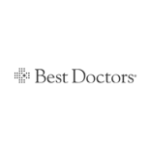
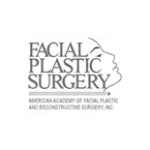

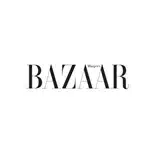


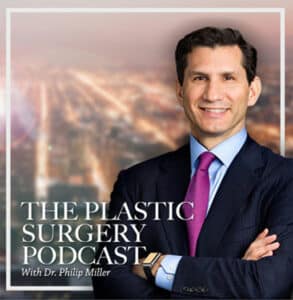
The Plastic Surgery Podcast with Dr. Philip Miller
Tune into The Plastic Surgery Podcast, hosted by facial plastic surgeon Dr. Philip Miller. Dr. Miller is here to answer your questions, de-mystify plastic surgery, and help you feel more knowledgeable and empowered about any procedure performed at our center.
-


Episode 44: My First Time
8 min -


Episode 43: Top 10 Reasons Not To Get A Rhinoplasty ( Plastic Surgery)
20 min -


Episode 42 : Osteomas & Lipomas
11 min -


Episode 41: All Ears Considered!
8 min -


Episode 40: Infrared Light Therapy
6 min -


Episode 39: Beauty, the Plateau
6 min -


Episode 38: Botox and Dermal Fillers
3 min -


Episode 37: Cost of Rhinoplasty
1 min -


Episode 36: Different Types of Nasal Surgeries
3 min -


Episode 35: Do You Have to Break the Nose for Rhinoplasty?
2 min -


Episode 34: Do You Have to Stay Overnight After Having a Rhinoplasty?
2 min -


Episode 33: Don't Have a Rhinoplasty!
2 min -


Episode 32: Endonasal or External
1 min -


Episode 31: Are You a Candidate?
2 min -


Episode 30: In The Office
17 min -


Episode 29: Can My Nose be Made Smaller?
4 min -


Episode 28: Can't Breath Through Nose
3 min -


Episode 27: Chin Implants - Mentoplasty
2 min -


Episode 26: Columellar Struts
23 sec -


Episode 25: Common Terms
5 min -


Episode 24: Connection Between Facial Resurfacing and Tattooing
5 min -


Episode 23: The Sooner, The Better?
4 min
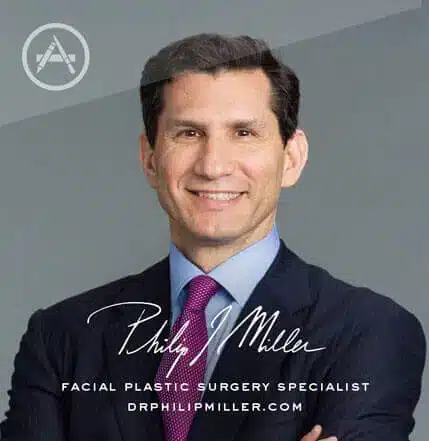
Plastic Surgery w/ Dr. Miller
If you’re thinking about getting a lift, nip, or tuck, this app is for you. It’s the most comprehensive pocket encyclopedia of plastic surgery terms, before and after photos, and visualization tools to help you really know what to expect from a procedure, including seeing potential results on your own photo. This app is only available on the App Store for iOS devices.
View in App Store



